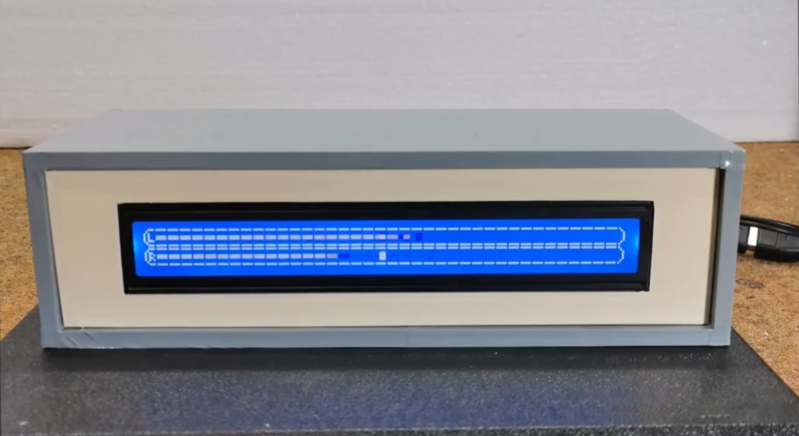We all love seeing data represented in pretty ways — whether it’s necessary or not. Take VU meters for example. They’re a super useful tool for audio editors to balance signals, but they also look really cool, even if you’re only listening to music. Who didn’t use a Winamp skin with a built-in VU meter back in the day? Even after the demise of everyone’s favorite media player, we still see these great graphs popping up all over the place.
Most recently, we’ve seen VU meters circle back around to have a bit of a retro vibe in this awesome Arduino-controlled LCD VU meter built by [mircemk]. Based on the KTAudio VU Meter project, it features an ultra-wide LCD, audio input, and volume knob, all tidily wrapped up in a case whose color scheme that can only conjure images of the famed Altair 8800, or an old Tektronix oscilloscope. The LCD itself is fairly responsive — but you can judge for yourself in the video below. The signature fading that so commonly accompanies screen refreshes on LCDs such as this one really adds to the retro effect.
You may just need one of these displays on your desk — after all, while you may not need to know how loud each audio channel is, don’t you at least want the information available? Just in case. Bar graph display a bit too modern-looking for you? Well then you should check out [mircemk]’s OLED version that displays dual analog meters.















Nice!
But I would have liked it even more if the Gain control, instead of going to 100 percent, would have gone to 11!
B^)
The borders around the bars make it less readable. Since it has no color the cursor should change to a more distinctive block above 0 VU and not as bold below zero. Or, make a bezel with a zero marker. Peak indicators should be smooth with their own longer time constant, not make large jumps.
Like Technics used to do back in the 1980’s with their cassette deck bar graph displays.
1) It takes stereo and mixes it to mono.
2) Is this a line or speaker level connection?
Yeah i noticed it as well that it mixes to mono, so what’s the point in two channel indication :D- I believe it’s line level. You usually cannot do speaker level inputs with a common ground.
If you use a trio of resistor ladders controlling the line of transistors to switch tricolour LEDs and then use some relatively large capacitors and a couple of diodes on two of them, a couple of inverters to make the colours look prettier and tie the inputs together, then it’ll do the peak with slow drop down effect, whilst blurring the colours with a relative percentage and the main bar still have the fast response time. Personally I prefer LEDs to liquid crystal and not a microcontroller in sight.